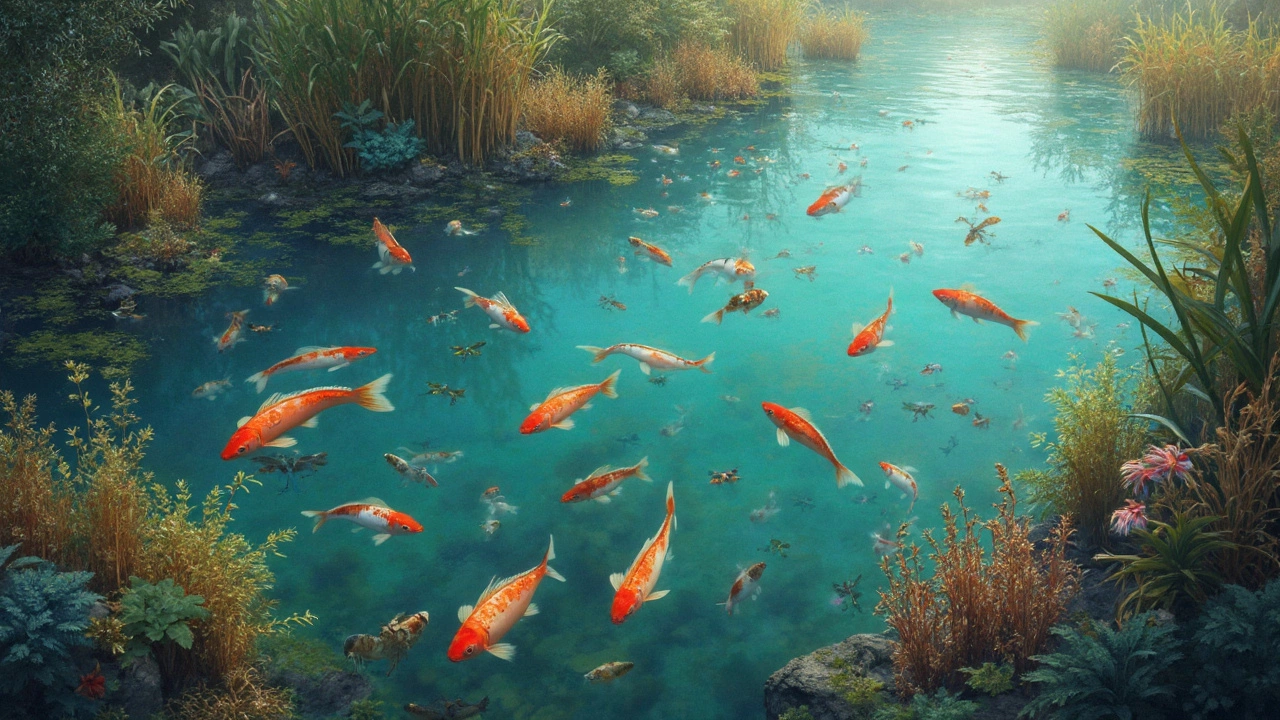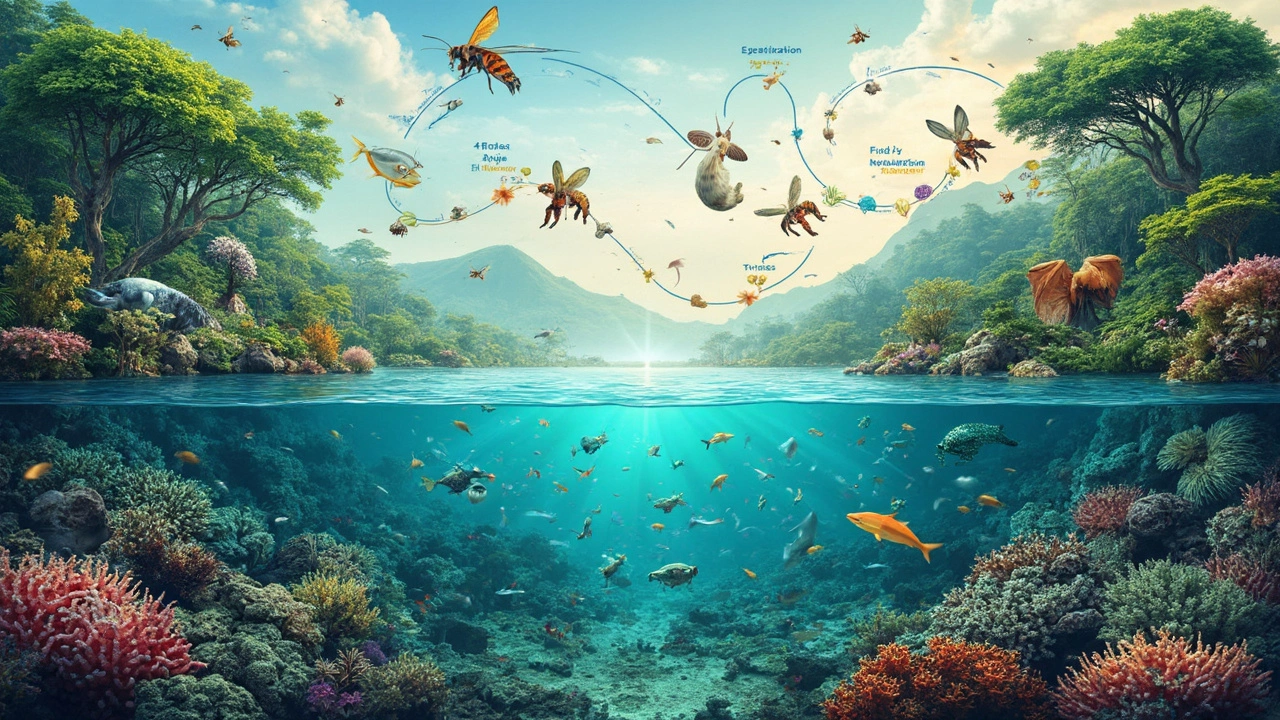When thinking about ecosystems, you might imagine lush forests or vast oceans. But did you know these environments fall into two main categories? Yep, we can divide ecosystems into terrestrial and aquatic groups. It’s like organizing a closet—grouping similar items makes everything easier to find and understand.
Terrestrial ecosystems are those that exist on land. Think of deserts, forests, grasslands, and even your backyard. They’re all part of this category. These ecosystems are home to countless species, all interacting in a complex web of life.
On the flip side, we have aquatic ecosystems. These cover bodies of water—rivers, lakes, and oceans. Aquatic systems are crucial since they support a huge variety of life, provide food, and even help regulate the climate. It's kind of like the Earth’s natural thermostat! Understanding these systems isn’t just about knowing facts; it’s about appreciating the delicate balance that keeps our planet ticking.
- Understanding Ecosystems
- Terrestrial Ecosystems
- Aquatic Ecosystems
- Interconnections and Biodiversity
- Preserving Our Ecosystems
Understanding Ecosystems
Ecosystems are like nature's version of bustling cities—teeming with life and interactions. They're communities where plants, animals, and microorganisms work together with their environment. From the smallest bacteria in the soil to the tallest trees in a forest, every element plays a role. But what exactly do these ecosystems do, and why should we care?
First off, ecosystems are essential because they provide essential services. These include producing food and oxygen, purifying the air and water, and recycling nutrients. Without them, life as we know it just wouldn't be possible. Imagine trying to breathe if plants didn’t produce oxygen or struggling to find food without the balance these systems provide.
Ecosystem diversity is also key. It ensures that life can adapt to changes, whether it’s a new predator or a shift in climate. More diverse systems tend to be more resilient. As the great naturalist John Muir once said,
"When we try to pick out anything by itself, we find it hitched to everything else in the universe."This beautifully illustrates how interconnected everything is.
- Terrestrial ecosystems like forests and grasslands cover about 30% of the Earth's surface. They’re vital because they act as the planet’s lungs and store carbon, helping mitigate climate change.
- Meanwhile, aquatic ecosystems make up about 71%. They're the main source of the world's oxygen, thanks to phytoplankton in oceans, and they support a massive range of life forms.
In a nutshell, ecosystems are the backbone of the environment. By understanding them, we can better appreciate their value, how they support life, and why it’s crucial to protect them. Whether you're strolling through a forest or kayaking in a river, those surroundings are doing so much more than looking pretty. They’re vital parts of our world.
Terrestrial Ecosystems
Let’s chat about terrestrial ecosystems, the ones on solid ground where we walk, build, and explore. These ecosystems are hugely diverse—like the social quilt of our planet! From the cold tundras to sweltering deserts, each type brings something unique to the table.
Forests, for example, are a big deal. They’re often called the lungs of the Earth because of their role in producing oxygen. It's fun to think of them that way, especially rainforests which are packed with biodiversity. Would you believe that rainforests, although covering just a smidge of the Earth's surface, are home to over half of the world’s plants and animals?
Then, we have grasslands. Think savannas or prairies—vast plains filled mostly with grasses. They support large herbivores like bison and zebras. These areas are key for agriculture, providing tons of food resources for us humans. Crazy to think about how some of our favorite foods trace back to grasses.
Don't forget about deserts, though they sometimes get a bad rap as barren places. Deserts are actually teeming with life adapted to extreme conditions, like camels and desert foxes. And deserts are crucial, helping to regulate our climate and aid in producing vital nutrients when the winds change.
Overall, natural habitats in terrestrial ecosystems support a range of life that’s integral to our world. They offer us resources, stabilize climates, and house diverse forms of life. Every tree, animal, and even the soil itself plays a role. So when we talk about the environment, these terrestrial wonders are definitely a big part of the conversation. Let's keep learning and caring for them!

Aquatic Ecosystems
Aquatic ecosystems are the life-support networks found in our oceans, rivers, lakes, and even the tiniest ponds. They're truly massive, covering about 71% of our planet's surface. These ecosystems are not only bustling with life but are also vital for everything from climate regulation to food production.
Let's start with the seas and oceans, which form the largest part of aquatic environments. These vast bodies of saltwater are home to a stunning diversity of organisms, from tiny plankton to gigantic whales. They play a huge role in oxygen production—did you know that about half the oxygen we breathe comes from marine plants?
But it's not all about the open seas. Freshwater ecosystems, like rivers and lakes, are equally crucial. Although they cover only a small fraction of the earth's surface, they host a diverse range of species and provide fresh drinking water for us and countless other organisms. They're often hubs of biodiversity, supporting unique species that aren't found anywhere else. In fact, about 40% of all fish species inhabit freshwater bodies!
Aquatic systems are also key in nutrient cycling, which means they're constantly working behind the scenes to keep the planet healthy. They help process carbon and nitrogen, which are vital for cleaning the air and sustaining life.
Interestingly, these ecosystems are interconnected—think of them as a big family. Changes in one part can ripple across others, affecting global climate patterns and biodiversity. This is why keeping our aquatic ecosystems healthy is so crucial. Pollution, overfishing, and climate change are significant threats these systems face today.
| Type of Ecosystem | Characteristics | Examples |
|---|---|---|
| Marine | Saltwater, large biodiversity | Oceans, Seas |
| Freshwater | Freshwater, smaller ecosystems | Rivers, Lakes |
By understanding and respecting these natural environments, we can help maintain the delicate balance necessary for life on Earth. Whether it's reducing single-use plastics or supporting sustainable fishing practices, small steps can make a big difference in protecting these vital ecosystems.
Interconnections and Biodiversity
Ever wondered how different species manage to live together and actually make it work? It’s all about interconnections in ecosystems. Imagine a web where everything’s intertwined. If you pluck one string, others move too. That’s what happens in real life when any part of this network is affected. Both terrestrial and aquatic ecosystems thrive on these connections.
In a forest, for example, trees aren't just providing shelter for animals. They’re also playing the role of air-conditioners by regulating temperature and purifying air. Down under the ocean, coral reefs are the bustling cities of the sea. They support around 25% of marine life despite covering less than 1% of the ocean floor. Pretty neat, right?
"To keep every cog and wheel is the first precaution of intelligent tinkering." - Aldo Leopold, an early advocate of understanding the value of biodiversity.
Biodiversity is kind of like nature’s insurance policy. The more diversity, the more resilience there is to environmental changes. For instance, diverse plant life means a better chance of withstanding disease outbreaks or pests. Animals benefit from this variety because if one food source fails, there are others to fall back on.
- In the Amazon Rainforest, it's estimated that every square mile can be home to about 125 mammal species and 400 bird species.
- Coral reefs provide an estimated $30 billion annually in goods and services worldwide.
These ecosystems support humans too, offering resources for our survival and affecting our climate. When we protect biodiversity, we’re essentially securing life for ourselves and future generations. So, next time you’re in a forest or swimming in the sea, remember, you’re in one big, connected family of life!

Preserving Our Ecosystems
Our world is a delicate balance, and ecosystems play a huge role in keeping it that way. But here's the catch—many of these natural habitats are under threat. Whether it's deforestation, pollution, or climate change, the challenges are real and pressing. So, what's our role in all of this?
First off, it's crucial to understand that every action counts. From reducing waste to supporting sustainable products, small changes can ripple out in big ways. Want to help ecosystems? Here are some practical steps:
- Conserve Water: This can help not just local areas but also larger aquatic ecosystems. Stop those leaks and be water-wise.
- Recycle and Reuse: Reducing demand for new resources means less strain on natural habitats.
- Support Eco-Friendly Products: Companies are increasingly aware of their environmental footprints. Opt for brands that prioritize sustainability.
But it doesn't stop at individual actions. Bigger problems need broader solutions. Governments and organizations worldwide are working to preserve ecosystems through legislation, conservation programs, and more.
Would a visual help? Check out this snapshot of forest coverage trends over the past decades:
| Year | Forest Area (Million Hectares) |
|---|---|
| 1990 | 4128 |
| 2000 | 3964 |
| 2010 | 3873 |
| 2020 | 3767 |
See that drop? It’s a clear sign we need to adjust our ways. Finally, let’s remember the power of education. The more we know about our planet, the better we can care for it. Dive into local environment groups or online resources to boost your knowledge and become an informed advocate for our planet’s future.
